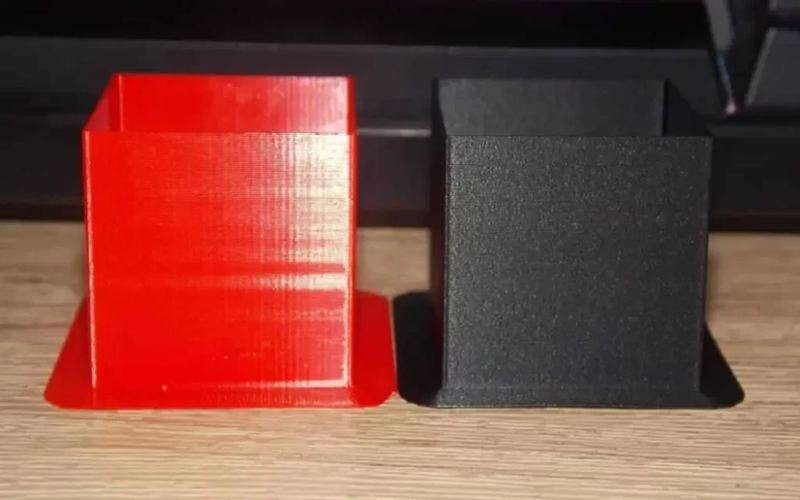In the realm of plastic sheet manufacturing, Polylactic Acid (PLA) and Acrylonitrile Butadiene Styrene (ABS) stand out as two prominent materials, each with distinct properties that cater to diverse applications.
As industries increasingly prioritize performance, sustainability, and cost, choosing between PLA and ABS becomes a critical decision.
This article compares their material characteristics, processing methods and applications to determine which is better suited for specific needs, offering insights for manufacturers and designers navigating this choice.
What Is Polylactic Acid (PLA)?
PLA is a biodegradable thermoplastic derived from renewable resources like cornstarch or sugarcane.
It is one of the most frequently used bioplastics suitable for numerous applications from decorative items to medical devices.
Compared to some of the other 3D printing filaments, PLA is relatively cost-efficient and allows for the printing of high-quality elements with rather smooth surface finishes.
It is also easy to work with, as it requires lower printing temperatures and produces minimal warping. It’s also stiffer than ABS or nylon.
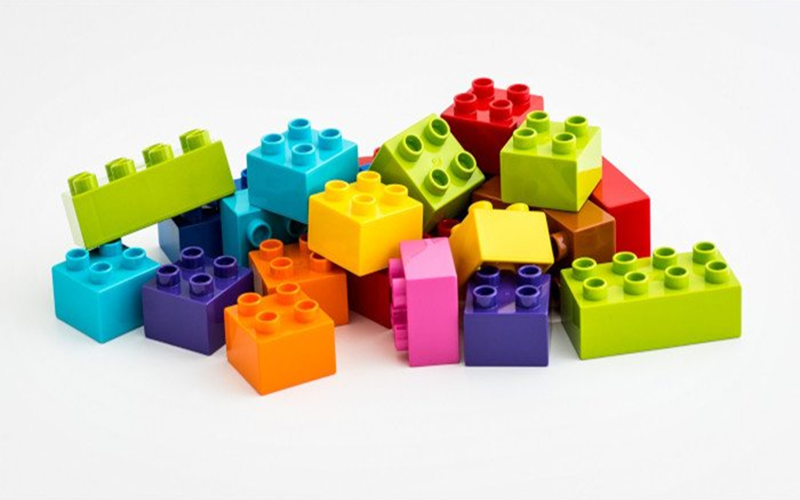
What Is ABS Plastic?
ABS is a petroleum-based, amorphous thermoplastic polymer characterized by a non-crystalline structure.
Renowned for its exceptional toughness, high impact resistance, and superior mechanical strength compared to PLA, ABS combines durability with a lightweight profile.
Its resistance to cracking under stress makes it ideal for crafting functional components, tools, electronic enclosures, household appliances, and toys, such as Lego bricks.
However, ABS has limitations in heat resistance, requiring careful application in high-temperature environments.
Additionally, its tendency to warp and emit strong odors during processing can pose challenges for 3D printing and other fabrication methods.
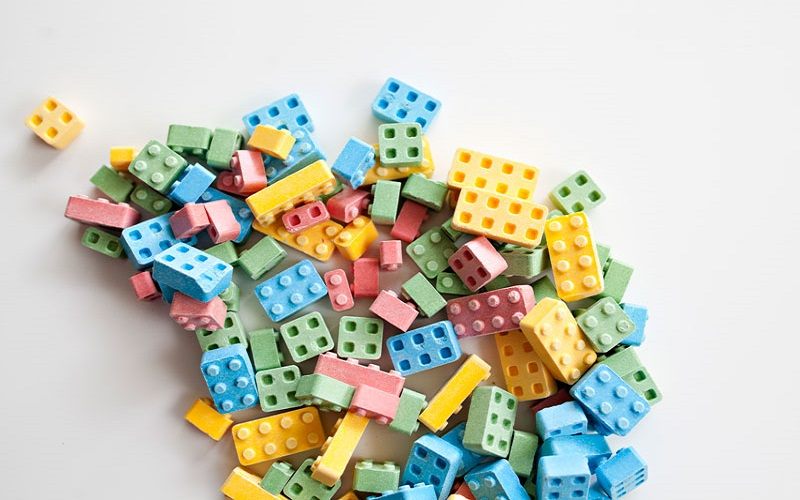
PLA vs ABS :Material Properties
Below is a comparative analysis of Polylactic Acid (PLA) and Acrylonitrile Butadiene Styrene (ABS) across various material properties.
Mechanical Properties
Strength and Toughness
PLA exhibits high stiffness but relatively low toughness, making it brittle under impact or dynamic loads. This characteristic renders it suitable primarily for low-stress applications such as packaging.
Conversely, ABS offers significantly higher toughness and impact strength , making it ideal for applications subjected to dynamic loads, including automotive parts.
ABS is notably less brittle than PLA, providing enhanced durability under mechanical stress.
Therefore, while PLA is stiffer and better suited for rigid, aesthetic uses, ABS stands out as the preferred material when durability and toughness are critical.
Impact Resistance
PLA exhibits moderate impact resistance and is prone to cracking under high stress, especially at low temperatures.
In contrast, ABS offers excellent impact resistance , maintaining durability even in rugged conditions, making it ideal for products like toys.
Overall, ABS provides superior impact resistance and durability in harsh environments compared to the more brittle PLA.
Hardness And Rigidity
PLA offers high hardness and rigidity with excellent scratch resistance, making it ideal for rigid, aesthetic products like displays.
On the other hand, ABS provides moderate hardness combined with balanced rigidity and toughness, delivering good scratch resistance suitable for aesthetic surfaces.
While PLA is harder and more rigid, suited primarily for static and aesthetic applications, ABS balances rigidity with toughness, making it more versatile for a wider range of uses.
Thermal Properties
Heat Resistant
Polylactic Acid (PLA) has a low heat distortion temperature (HDT) of 50–60°C, making it prone to deformation in high-temperature environments and suitable only for low-heat applications.
In contrast, Acrylonitrile Butadiene Styrene (ABS) offers moderate heat resistance with an HDT of 80–100°C, ideal for indoor applications but susceptible to softening at very high temperatures.
ABS’s significantly better heat resistance makes it more suitable for environments exposed to higher temperatures, while PLA is limited to low-heat settings.
Flame Retardancy
Both Polylactic Acid (PLA) and Acrylonitrile Butadiene Styrene (ABS) exhibit poor inherent flame retardancy, requiring the addition of flame-retardant additives to meet fire safety standards, which increases production costs.
PLA has limited natural flame resistance, and ABS is non-flame-retardant by default, making them comparable in this aspect.
Consequently, both materials face similar cost implications when used in applications requiring enhanced fire safety.
Chemical Properties
Chemical Resistance
Polylactic Acid (PLA) offers moderate chemical resistance to acids and water but is sensitive to alkalis and organic solvents, which can lead to degradation, limiting its use in harsh chemical environments.
In contrast, Acrylonitrile Butadiene Styrene (ABS) provides good resistance to acids, alkalis, and oils, though it remains vulnerable to organic solvents that may cause swelling or cracking.
Overall, ABS demonstrates better chemical resistance, particularly against alkalis and oils, while PLA is more prone to degradation from these substances.
Weathering And UV Resistance
Both Polylactic Acid (PLA) and Acrylonitrile Butadiene Styrene (ABS) exhibit poor weathering and UV resistance, becoming yellow and brittle under prolonged sunlight exposure.
PLA requires UV stabilizers to mitigate degradation, while ABS often needs anti-UV coatings for outdoor applications.
Neither material has a significant advantage in UV performance, as both necessitate additional treatments to ensure durability in outdoor environments.
Processing Properties
Forming And Processing
Polylactic Acid (PLA) is easy to process through extrusion, thermoforming, and 3D printing due to its low melting point (180–220°C), making it ideal for rapid prototyping and eco-friendly products, but it requires careful temperature control to prevent degradation.
In comparison, Acrylonitrile Butadiene Styrene (ABS) excels in injection molding, extrusion, and thermoforming, offering versatility for complex shapes and high surface quality, suitable for intricate designs in automotive and electronics applications.
ABS is more robust and adaptable for complex processing, while PLA’s ease of use in 3D printing is offset by its need for precise temperature management.
Surface Treatment
Polylactic Acid (PLA) offers a smooth, glossy finish and is easy to color, making it suitable for aesthetically pleasing products, but its limited bonding and plating capabilities restrict its use in applications requiring advanced surface treatments.
Alternatively, Acrylonitrile Butadiene Styrene (ABS) provides a high-gloss surface that is easily colored, plated, or bonded, making it ideal for aesthetic finishes in products like appliance casings.
ABS excels in surface treatment versatility, particularly for bonding and plating, while PLA’s capabilities are more constrained despite its attractive glossy finish.
In summary, PLA is stiffer, denser, and easier to process for 3D printing, with a glossy finish.
But it is brittle, has lower heat and chemical resistance, and is less flexible, making it ideal for low-stress, aesthetic, or biodegradable applications like packaging and food containers.
ABS offers superior toughness, impact resistance, flexibility, and heat resistance, with versatile processing and surface treatment options.
It is thus better suited for durable, dynamic applications such as automotive parts, electronics housings, and consumer goods.
| Property | PLA | ABS |
|---|---|---|
| Density (g/cm³) | 1.24–1.26slightly denser, providing a solid structure | 1.04–1.06lighter, facilitating easier handling and transport |
| Tensile Strength (MPa) | 50–60adequate for non-load-bearing applications like food containers | 40–50suitable for durable, non-pressurized applications like electronics housings |
| Thermal Conductivity (W/m· K) | 0.13–0.20good insulation for low-heat applications | 0.15–0.25 comparable insulation for general applications |
| Flexibility | Low (3–4/10), rigid, less elastic, requires precise cutting/shaping | Good (6–7/10), slightly elastic, easier to cut/install for complex shapes |
PLA vs ABS: Pros And cons
Pros Of PLA
Biodegradable and sourced from renewable materials like corn starch, PLA filament is ideal for eco-friendly packaging and rapid prototyping applications.
It is easy to process in 3D printing and extrusion due to its lower printing temperature and minimal warping tendencies, making it a popular material among common filaments.
PLA typically offers high clarity and stiffness for aesthetic applications with smooth surface finishes, producing printed parts with visible layers that are easy to post-process.
Additionally, PLA emits minimal odors during printing, allowing use in well ventilated areas without discomfort.
Its key properties make it suitable for functional prototypes and other practical applications where environmental impact and ease of use are priorities.
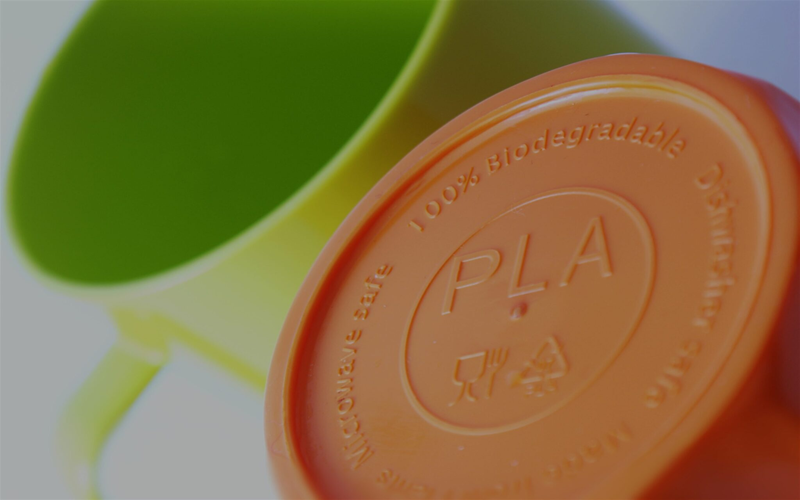
Cons Of PLA
PLA is brittle with low impact strength and has poor heat resistance, deforming at 50–60°C. It degrades under UV exposure without additives.
Additionally, PLA prints can struggle to withstand mechanical stress and elevated temperatures, limiting their use in high-temperature environments or outdoor applications exposed to UV light.
While printing PLA is generally straightforward due to its lower printing temperature and minimal warping tendencies, it requires careful design considerations such as maintaining a minimum wall thickness to ensure part strength.
PLA also has limited chemical resistance compared to ABS filaments and other materials, making it less suitable for applications involving exposure to solvents or harsh chemicals.
Pros Of ABS
High toughness and impact resistance, perfect for durable automotive parts and toys; good thermal stability (up to 100°C); versatile for injection molding and thermoforming.
ABS parts also offer excellent chemical resistance and can withstand higher temperatures compared to PLA.
Additionally, ABS allows for effective post processing techniques such as acetone vapor smoothing to achieve a smooth, matte finish, enhancing both aesthetics and structural integrity in functional parts and industrial applications.
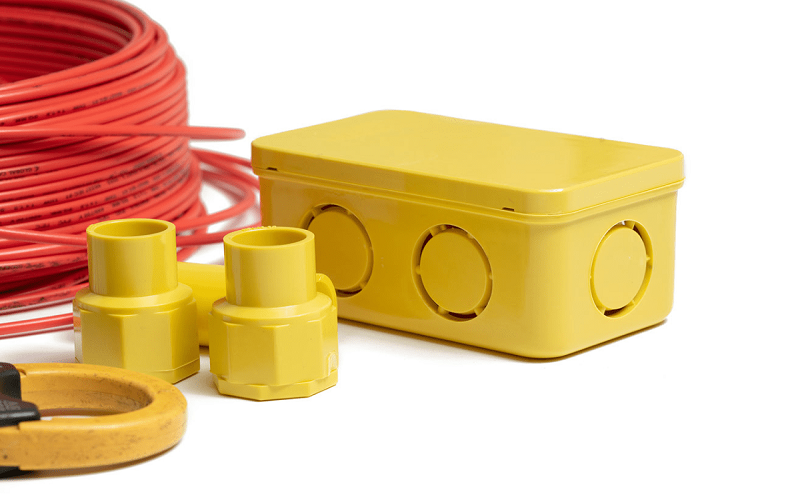
Cons Of ABS
ABS is non-biodegradable and has a higher environmental footprint compared to PLA.
It is prone to warping during printing, which can affect dimensional accuracy and requires a heated bed and controlled printing environment to minimize defects.
Additionally, ABS can produce strong odors and potentially harmful fumes during filament printing, necessitating good ventilation or the use of a well-ventilated area or enclosure.
For outdoor environments, ABS parts require UV-resistant coatings to prevent degradation and maintain their mechanical properties over time.
These factors make ABS printing more challenging and less suitable for beginners or indoor use without proper equipment.
PLA vs ABS: Processing Methods
The processing methods for Polylactic Acid (PLA) and Acrylonitrile Butadiene Styrene (ABS) highlight their distinct compatibilities with various manufacturing techniques.
Polylactic Acid (PLA)
3D Printing
PLA excels in 3D printing due to its low melting point (around 180–220°C), making it easy to process with minimal equipment requirements.
It produces smooth, high-quality prints with good detail, ideal for prototyping and consumer goods.
However, PLA prints generally cannot higher withstand temperatures, limiting their use in applications exposed to heat or requiring thermal stability.
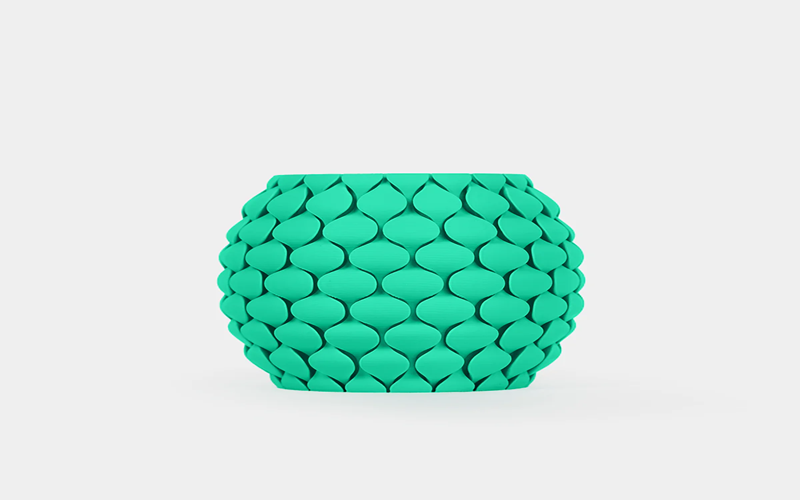
Injection Molding
Polylactic Acid (PLA) can be processed using injection molding for producing biodegradable and eco-friendly plastic parts.
However, due to its lower heat resistance compared to other plastics, careful temperature control is essential during molding to prevent degradation.
Injection molding with PLA is suitable for manufacturing small to medium-sized components used in packaging, disposable items, and medical devices, where environmental sustainability is a priority.
Blow Molding
Polylactic Acid (PLA) can be used in blow molding processes to produce lightweight, biodegradable containers and packaging materials.
However, the heat sensitivity of PLA requires careful temperature control during blow molding to maintain material integrity and prevent degradation.
Other Processes
PLA is well-suited for extrusion and thermoforming, producing sheets for packaging and biodegradable products.
Its heat sensitivity restricts its use in high-temperature processes like injection molding or CNC machining, where overheating can cause degradation.
Acrylonitrile Butadiene Styrene (ABS)
3D Printing
ABS is highly compatible with 3D printing, producing durable, impact-resistant parts using ABS filaments, ideal for functional components like automotive parts and toys.
However, it requires higher printing temperatures (220–250°C) and careful control to prevent warping.
Heated Bed
A heated bed (typically 80–110°C bed temperature) is essential for 3D printing with ABS to ensure proper adhesion and minimize warping, adding complexity and energy costs compared to PLA.
Injection Molding
ABS is widely used in injection molding due to its excellent flow properties and ability to produce complex, high-precision parts.
The material’s heat resistance allows it to withstand the high temperatures involved in injection molding without degrading, resulting in strong, stable finished products suitable for demanding applications.
Blow Molding
Acrylonitrile Butadiene Styrene (ABS) is well-suited for blow molding processes due to its excellent toughness and impact resistance.
This method allows ABS to be formed into hollow parts such as containers and automotive components with uniform wall thickness and good dimensional stability.
Its ability to withstand the stresses of blow molding makes ABS a preferred choice for producing durable, lightweight, and complex-shaped products.
Other Processes
ABS is versatile, handling extrusion, thermoforming, injection molding, and CNC machining with ease. Its ability to withstand high-temperature processing makes it ideal for complex shapes and precision components in electronics and automotive industries.
All in all, ABS offers superior versatility across a broad range of manufacturing processes, including high-temperature methods like injection molding and CNC machining, while PLA is simpler and more energy-efficient for low-heat processes like 3D printing and extrusion.
PLA vs ABS: Application
The application suitability of Polylactic Acid (PLA) and Acrylonitrile Butadiene Styrene (ABS) reflects their distinct material properties, making each ideal for specific industries and use cases.
Polylactic Acid (PLA) Applications
Sustainable Packaging
PLA is extensively used for compostable food containers, biodegradable wraps, and eco-friendly bags, leveraging its biodegradability and food-safe properties for sustainable packaging solutions.
Prototyping And 3D Printing
Its low melting point and ease of printing make PLA ideal for 3D-printed prototypes, architectural models, and hobbyist projects, offering high detail and clarity.
Disposable Consumer Goods
PLA is employed in single-use items like cutlery, straws, and cups, where its eco-friendly nature aligns with demands for sustainable, disposable products.
Agricultural Films
PLA sheets are applied in mulch films and greenhouse covers, providing biodegradable alternatives that decompose naturally, reducing environmental impact.
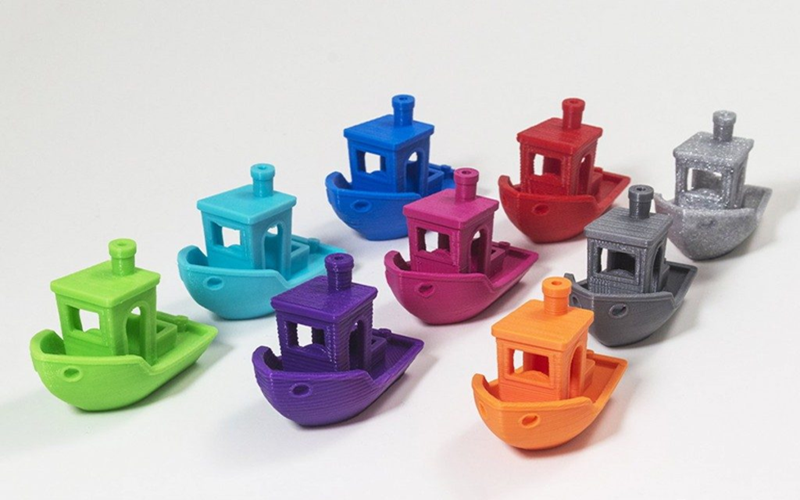
Acrylonitrile Butadiene Styrene (ABS) Applications
Automotive Components
ABS is used for dashboards, interior panels, bumper parts, and exterior trims, benefiting from its high impact resistance and durability in demanding conditions.
Consumer Electronics
ABS employed in casings for laptops, smartphones, and other devices, where its toughness and aesthetic versatility ensure both protection and visual appeal.
Durable Goods And Toys
ABS is a key material in toys , appliance housings, and sporting equipment, offering robustness for products subject to rough handling.
Piping And Construction
ABS utilized in pipes, fittings, and structural components due to its corrosion resistance and strength, suitable for plumbing and industrial applications.
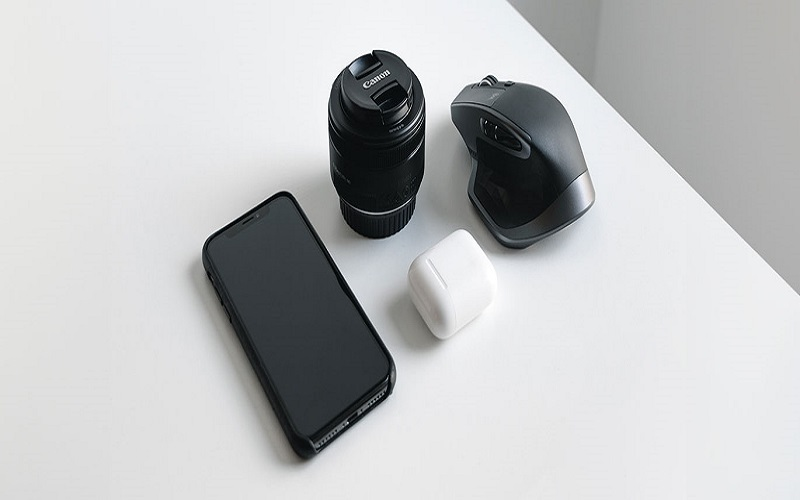
How To Choose Between ABS And PLA?
Choosing between ABS and PLA depends on the specific requirements and constraints of your project. Both PLA and ABS are common materials in 3D printing and manufacturing, but their distinct properties make them better suited for different applications.
PLA is ideal for eco-friendly applications such as sustainable packaging, disposable consumer goods, and 3D-printed prototypes. It offers biodegradability, ease of printing due to its lower printing temperature and minimal warping tendencies, and produces smooth surface finishes.
However, PLA has limited durability, lower impact resistance, and cannot withstand higher temperatures, making it less suitable for functional parts exposed to mechanical stress or elevated temperatures.
On the other hand, ABS provides superior toughness, impact resistance, and heat resistance, making it the right material choice for durable, high-impact applications like automotive parts, electronics housings, and household appliances.
ABS filaments require a heated bed and controlled printing environment due to warping tendencies and produce strong odors during printing, so good ventilation is necessary.
ABS also supports effective post processing techniques such as acetone vapor smoothing to improve surface finish and structural integrity.
When deciding between PLA and ABS, consider key differences such as mechanical properties, heat resistance, environmental impact, and processing requirements.
By balancing these factors, you can select the right material that best aligns with your functional needs and sustainability goals.

